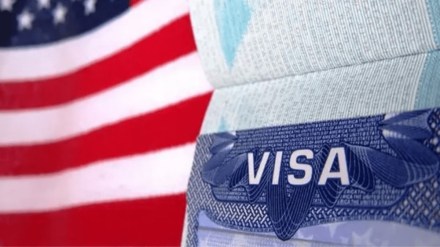For those looking to work in the US without an H-1B visa, they may consider opting for the employment-based, first-preference visa. The EB-1 employment-based, first-preference visa is available to foreign workers with extraordinary ability, professors or researchers with outstanding work, or to multinational executives or managers.
In some cases, you may not even need a sponsor from America. But, as an eligibility condition, you must be able to demonstrate extraordinary ability in the sciences, arts, education, business, or athletics through sustained national or international acclaim. There are three subcategories within the EB-1 visa: EB-1A, EB-1B, and EB-1C.
Outstanding professors and researchers must demonstrate international recognition for their outstanding achievements in a particular academic field. They need to provide an offer of employment from the prospective U.S. employer. The private employer must show documented accomplishments and that it employs at least 3 full-time researchers. No labor certification is required.
In the case of a certain Multinational manager or executive, your petitioning employer must be a U.S. employer and intend to employ you in a managerial or executive capacity. The petitioner must have been doing business in the U.S. for at least 1 year as a legal entity with a qualifying relationship to the entity that employed you abroad in a managerial or executive capacity.
Recently, there were reports that US authorities have taken action against fraudulent and fake evidence submitted in support of EB-1A petitions. “It truly feels it’s true, although there is no official communication from the USCIS,” says Dmitri Litvinov, CEO and Founder of Dreem.
“There are 2 potential scenarios: either a particular lawyer was compromised, and the review of cases created by him earlier started, or frequently appearing EB-1A evidence (like Awards events, etc) have been questioned if they are genuine, and the revoke got cases that also used them,” adds Litvinov.
EB-1A petition filers need to take care and avoid any shortcuts. “You need a thoughtful strategy, a compelling narrative, and an enhanced totality of evidence.
Not just open-source templates or ‘tick the boxes for criteria’, this does not work anymore. More cases publicly available and in closed immigration firms communities show the cases got RFEs or were denied with 5-6 criteria met, but not satisfied with the totality and final merits.
Pay special attention to the narrative of your case and the Final Merits section. More and more top Tech Pros are racing to secure their spot before policy tightens, but USCIS officer capacity hasn’t grown. So human judgment plays an ever-bigger role,” says Litvinov.
But, is EB-1A a good alternative for an H-1B visa? “This is a longer-term, more reliable, and valuable opportunity. With EB-1A, you have a chance not just to work in the U.S. temporarily, but to legalize here permanently, changing your immigration status to a Green Card in the long run. For Indians, with a backlog of EB-2/3 green card applications being dozens of years, it’s essentially one of the very few options,” says Litvinov.
EB-1A is allocated on a fiscal-year basis. For FY 2025, USCIS will continue accepting EB-1A I-140 petitions through September 30, 2025. As for the Congress cap, EB-1 petitions are capped at 28.6% of the 140,000 annual employment-based green cards—that works out to about 40,040 EB-1 visas per year.
It’s important to note that the 40,040 visas are shared among EB-1A, EB-1B, and EB-1C subcategories. There is no specific sub-cap for EB-1A, so the actual number of EB-1A visas issued depends on demand across these subcategories. EB-1A is extremely popular among Indians. In Q1 FY25, India remains one of the two largest source countries (alongside China) for I-140 receipts in the EB-1A category. Moreover, India has consistently held a spot in the top five source countries for EB-1A/I-140 filings over the past five years.
